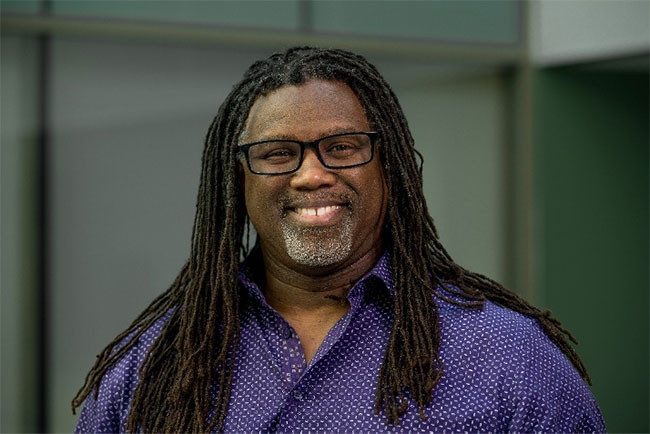Conversations with corporate researchers
Barry Jennings
Director, Commercial Cloud and Business Planning Insights, Microsoft Research + Insights
What is the most rewarding part about working within insights at a global organization?
 That’s an easy one. It’s the teamwork aspect for sure. I’m constantly impressed by the power of bringing a broad set of talented folks together to solve a problem.
That’s an easy one. It’s the teamwork aspect for sure. I’m constantly impressed by the power of bringing a broad set of talented folks together to solve a problem.
Our business spans a wide set of technologies, products and services that address the needs of consumers, software developers, IT professionals, business decision makers and end users from all over the world. On an average day, I have a number of people within the team I manage who can share data, deliver insight or can find the most recent point of view we need to address the issue we are tasked to solve, and they work well together to do just that.
What makes it even richer is that we also have access to people across our entire Research + Insights organization who can contribute content, reshape our thinking or even push an alternative perspective that up-levels the insights we create. Being able to leverage the deep insights of a marketing scientist on one team who has been here well over a decade and pair that with fresh ideas and a different understanding of the problem from a research manager early in their career simply brings better answers for our stakeholders. Having access to data that has a consumer’s perspective on a product and using that knowledge to better understand how we might improve things on the business-to-business side makes deeper insight and better impact for our company. It’s really rewarding to be a small part of that day in and day out.
Do you have any tips for client-side insight professionals looking to develop strategic partnerships with internal stakeholders?
Three things come to mind when I think about building and nurturing stakeholder partnerships:
- Listen and share.
- Answer the business questions, don’t just execute the project.
- Remember you are on the same team.
As insights professionals it is critical that we listen well and understand the strategic business questions that need to be solved. It’s equally important that an analyst shares a point of view in these conversations. We often have a broader set of data that we bring to a discussion. Pushing a POV forward might fill in some information gaps and get the team focused on a more precise question that will drive impact rather than simply add more information.
Our roles should be hyper-focused on creating insight that answers key business questions, and managing a project is an important part of being able to do that. But focusing on perfecting project execution rather than investing the right time in understanding and answering the key question is what builds trust and keeps us relevant. It is a pretty simple concept, but not always easy to execute well when it pulls us away from our craft.
And finally, remembering that you and your stakeholders are on the same team is critical. Client-side researchers are not in the business of generating revenue from conducting research. We have products and services to market, sell and service, and our research is meant to provide strategic guidance so that we are better at all three of those areas. When we focus on delivering insights that drive decisions that advance our company’s goals that stakeholder are usually tasked with handling, we help the company succeed.
How do you see commercial research and insights changing in the next five years?
I believe it will be critical for insights professionals to be pretty fluent across a broad range of techniques and tools to remain effective. I recently read “Range” by David Epstein, which discusses the value of being more a generalist than a specialist. He referred to two different types of learning environments – some that are kind, where things are fairly clear cut and operate in fairly regular way, and some are wicked, where things tend to be unpredictable, highly evolving, unclear, incomplete and volatile. I think research and insights will have to connect the dots and thrive in a world with lots of disparate data and information sources. That requires skills that allow you to stitch together the abstract and make meaning from it. That’s going to be an increasingly sizeable portion of what we will do.
What are the characteristics of a great leader, specifically within research and insights?
I have been blessed with some pretty strong leaders across my career. Each one brought something different to the table that helped me learn and grow. Four characteristics were pretty consistent across them all.
They were really great at creating a vision and mission in a way that actually represented something we could reach for and gave us a framework for achieving it.
They were exceptional at harmonizing what the team would do as well as how we should go about doing it. Mission needs culture if a team is going to excel.
They had a strong tendency to consistently create, build and innovate so that we were ahead of the curve and trying new things that push us forward or evolving things that we did well, but could be made better. Advancing the craft is a big hallmark of a great leader.
Finally, a great leader listens to various perspectives, creates clarity across those inputs and then not only makes strong decisions, but also owns those decisions.
